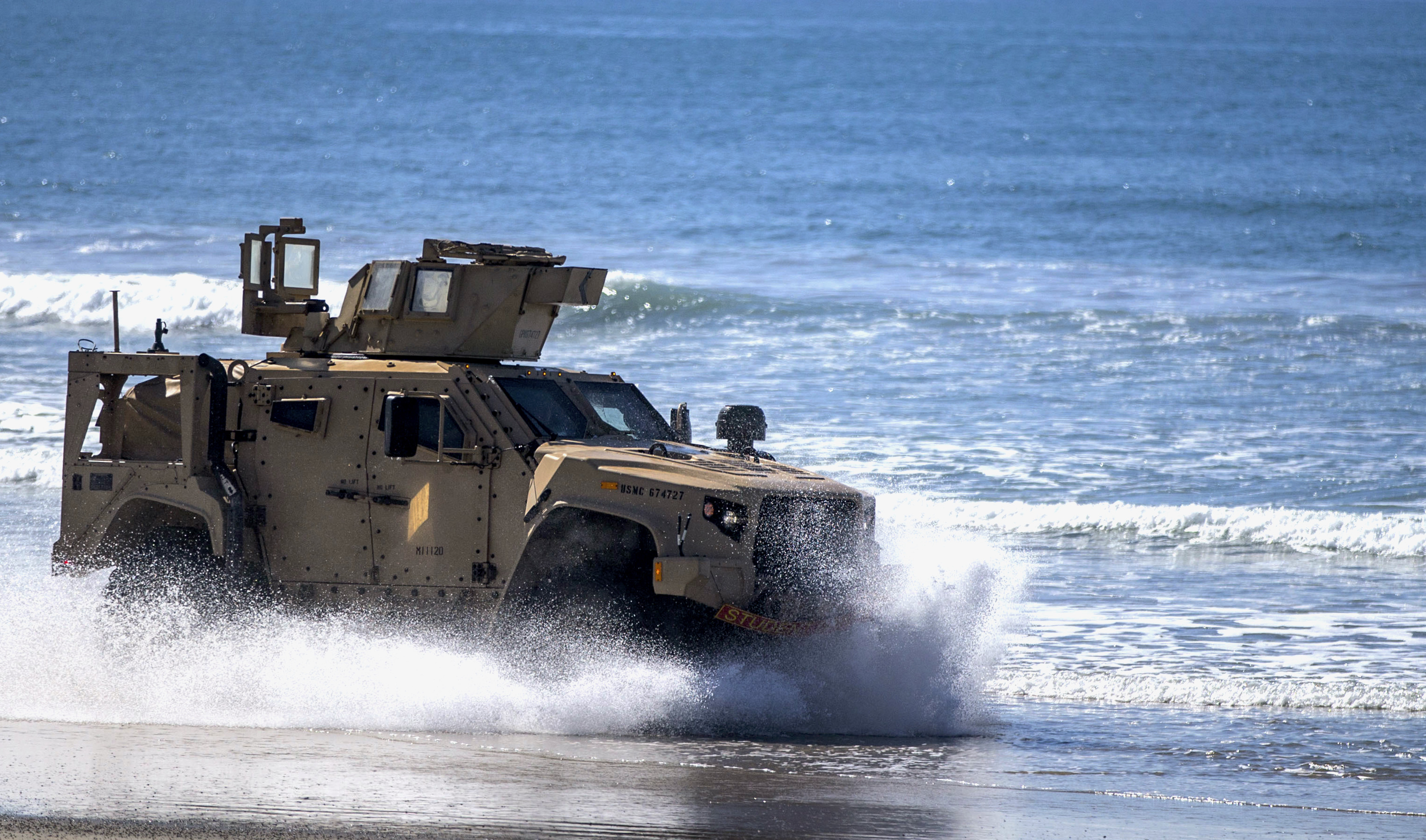
CAPITOL HILL — The Marine Corps is on a course to overhaul its force design in just a matter of years to better position itself to deter and, if needed, defeat China in the Pacific, the commandant said today. The outcomes of two future force reviews should be publicly released within the next month, he said, though they’re currently waiting for final approval from the Office of the Secretary of Defense.
Gen. David Berger, who took over as commandant just seven months ago, said today that he expects to divest of legacy equipment that doesn’t support the Expeditionary Advance Base Operations (EABO) concept, invest in new small amphibious ships for dispersed operations and make lethality and survivability upgrades to traditional amphibs in the coming years, all to counter a Chinese force that is more active at sea and that tries to deny American forces access with long-range weapons.
The Fiscal Year 2021 budget request, released yesterday, recommends investing in the Joint Light Tactical Vehicle (JLTV) and Amphibious Combat Vehicle (ACV) and making enhancements to the High Mobility Artillery Rocket System (HIMARS) to support EABO. It would also divest of “vehicles, radars, planned modifications/upgrades and other equipment” – including the Air Defense Radar, Mine Resistant Ambush Protected Vehicle and Amphibious Assault Vehicles – that do not support high-end expeditionary operations.
Berger said today while speaking at an annual Amphibious Warship Industrial Base Coalition breakfast that these changes show the Marines’ agility and the operational imperative to evolve quickly.
“Now that’s not the safe way to go. The safe way to go is holding what you’ve got” until you have replacements, he said of the current plans to ditch legacy systems now.
“But I am absolutely 100-percent confident that if we took the safe way we would be outpaced in five years. We will not do that.”
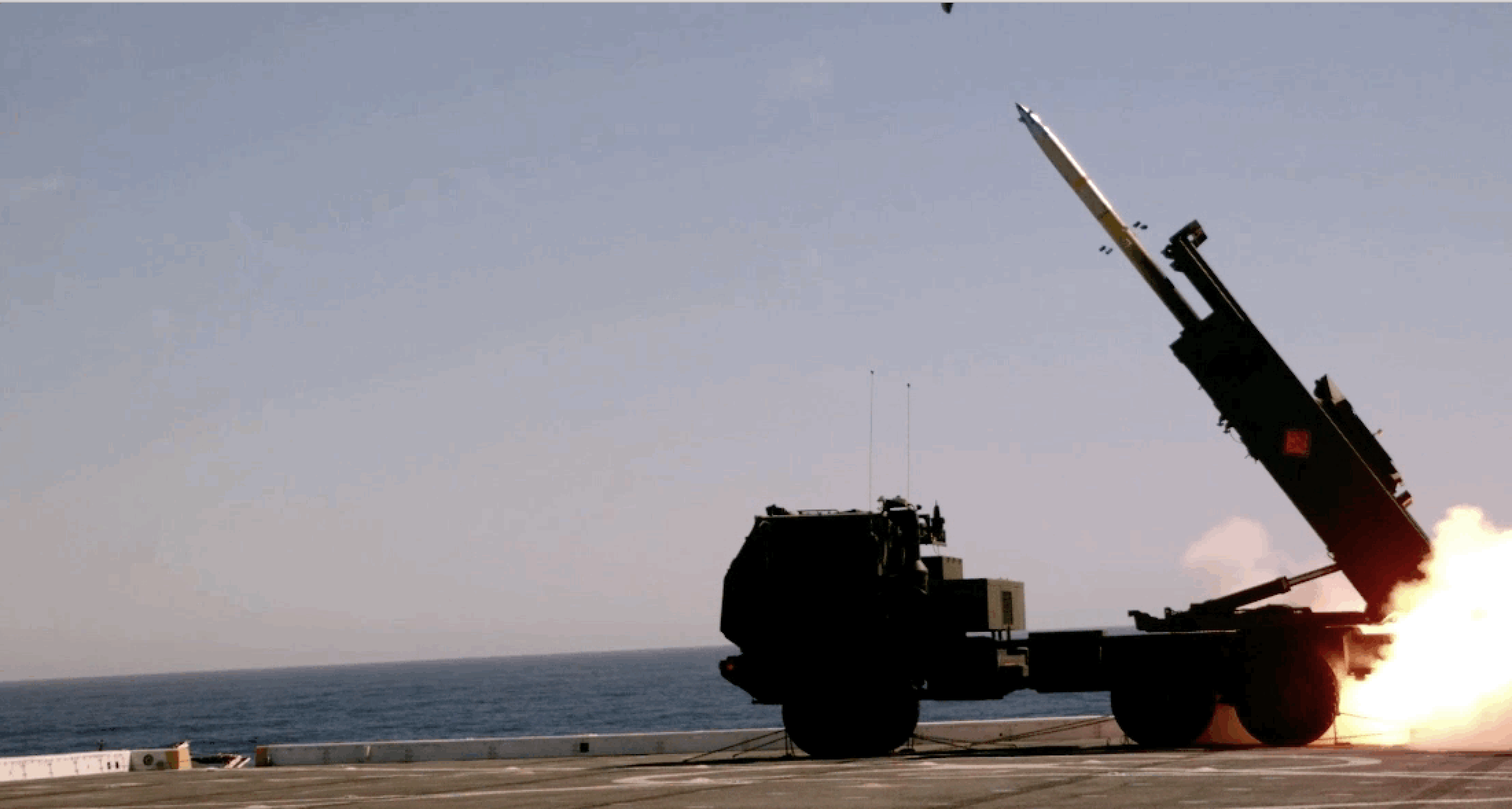 In searching for ways to free up money to reinvest elsewhere, Berger said, he looked for places where, “if you’re going to divest of some capability, is there a mixture of other capabilities that you can make up for that in the short term? And it’s not a gamble at all, it is all fed by [wargaming] and modeling: if you take away this capability, how does the fight go? What tactics do you need to change? What structure do you need to change? But we will absolutely divest pretty rapidly in the next three years of capabilities that we feel like are not going to have the legs or are not worth pouring the money into to keep them going another six, seven years.”
In searching for ways to free up money to reinvest elsewhere, Berger said, he looked for places where, “if you’re going to divest of some capability, is there a mixture of other capabilities that you can make up for that in the short term? And it’s not a gamble at all, it is all fed by [wargaming] and modeling: if you take away this capability, how does the fight go? What tactics do you need to change? What structure do you need to change? But we will absolutely divest pretty rapidly in the next three years of capabilities that we feel like are not going to have the legs or are not worth pouring the money into to keep them going another six, seven years.”
Leaders elsewhere in the Marine Corps have been coy about what specific systems they’re eyeing to divest of or invest in, though Berger laid out a general outline in a December War on the Rocks essay. In the essay, he noted that some of his top priorities were unmanned vehicles to deliver lethal effects by air, to deliver logistics in all domains and to move Marines around on the ground; mobile artillery and long-range precision fires, to include anti-ship missiles; mobile air defense systems, including directed energy systems; offensive electronic warfare capabilities and defensive signature management capabilities; mines; and more.
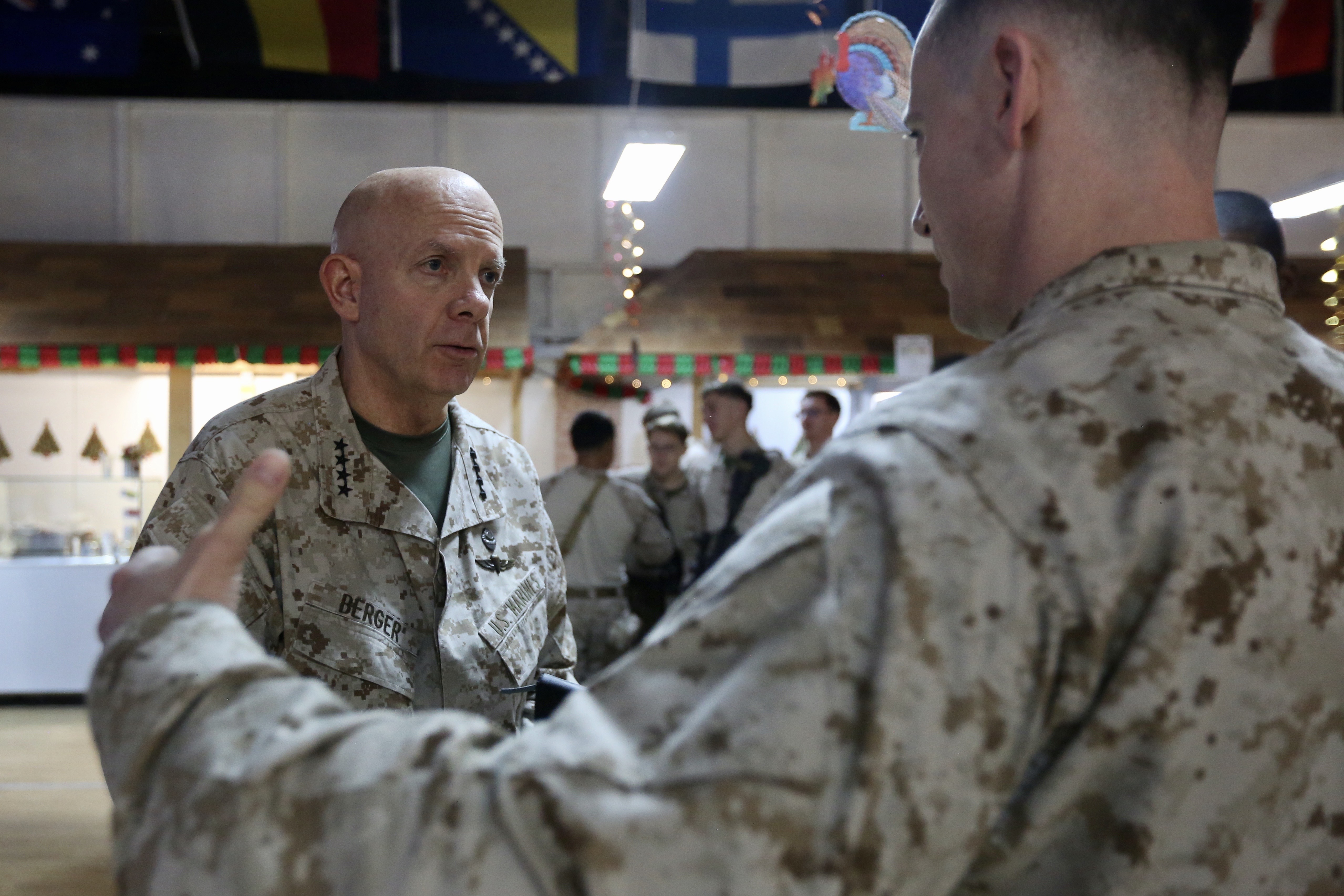
Berger, asked today about the force design review he’s conducting to work out those specifics, said, “we’re done with this portion of it. I’ll sit down with the leadership inside the Pentagon this week and next week, and then we’re off to the races. … We’re done our homework for this portion,” and he expects to brief Navy and Pentagon leaders, and then lawmakers, and then the public, on his plan in the coming weeks.
“I think in the next 30 days it will all come out,” the commandant said.
Additionally, the Marines are working with the Navy on an Integrated Naval Force Structure Assessment that looks at the manned and unmanned ships and connectors the services will need to support the Expeditionary Advance Base Operations and Distributed Maritime Operations concepts of operations.
“Yesterday we spoke with the secretary of defense about it and the deputy secretary of defense. I think what’s going to happen is, at some point – it’s up to really the two secretaries for the timing – but the Navy and Marine Corps’ work is largely done on this first part, but then it becomes iterative. We’re not going to wait three years to do another one because we have an adversary that’s moving and technology is moving,” Berger said, noting it had been three years since the Navy last conducted an FSA to consider what sized fleet it should be aiming to build.
“Whatever the outcome of it is, I would hope comes out pretty shortly. But I think, rightfully so, the two secretaries want to make sure that the inside analysis done by the Navy and Marine Corps is subject to an external look, whether that’s from within the building or outside, to make sure that we’re not drinking our own Kool-Aid. And I don’t suspect that, but I think when we’re talking big schemes like this effort, that’s a good call. So I think we’ll wait and see what the secretary of defense says, but I am really happy with the collaboration between the Navy and Marine Corps to this point and the analytical underpinning.”

Berger discussed the changing environment in the U.S. Indo-Pacific Command area of operations, saying that Chinese efforts to field anti-access/area-denial systems could deter forces trying to get into the theater but that the U.S. Marine Corps would already be inside that weapons engagement zone so as to not be shut out.
Those forces living and training inside that bubble need to be equipped with lethal but light equipment, in case they are called upon to switch gears and head to a fight.
“Your forward contact forces that are deterring every day are your fighting forces,” Berger said. They’ll be asked to operate in small, distributed groups, capable of taking a location, using it to refuel and rearm planes, strike a target or move supplies, and then pack up and move to a new location within 48 to 72 hours to complicate Chinese forces’ ability to target them or defend against them.
“Anything less than that and we make it too easy for them. We’re not going to do that,” Berger said.
Rep. Mike Gallagher (R-Wisc.) also spoke at the breakfast event, talking at length about the challenge China poses and the need to optimize the Marine Corps force for EABO operations.
He noted that the recent Iranian attack on U.S. forces in Iraq made clear that “fixed forward bases are incredibly vulnerable. And if we consider our bases in [U.S. Central Command] vulnerable to threats from Iran, consider how even more vulnerable our fixed bases in INDOPACOM are to a much more sophisticated adversary, the Chinese Communist Party. I think the solution, as the Commandant’s Planning Guidance outlines, is to have small teams of combat credible Marines deployed forward with sufficient resilience to persist within the weapons engagement zone once actively contested – that’s his phrase – and create denied space for the enemy.”
Gallagher said everyone generally agrees that the National Defense Strategy has the right aims – it shifts focus from ground wars in the Middle East and prioritizes peer competition with China – but he said that “that’s a massive change, and the Pentagon, like a large ship, is struggling to change with that. It’s struggling to figure out how do we do deterrence by denial in INDOPACOM. How do we deny potential adversaries their objectives in the first place, rather than rolling them back after the fact? That hinges on having forward forces – no matter how lethal, forces stationed in [the continental U.S.] simply cannot deter adversary aggression in real time.”
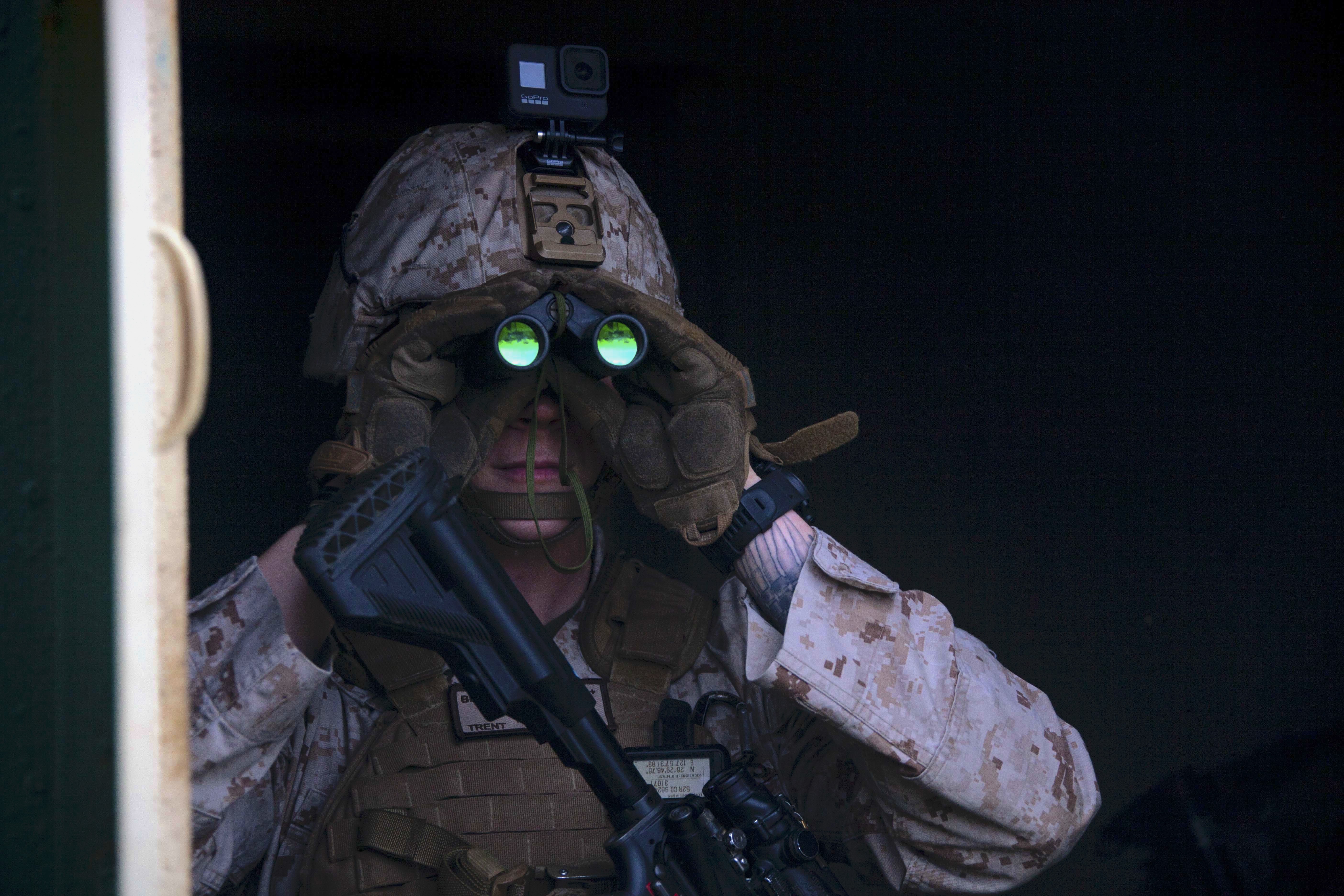
Gallagher said this need to be forward and dispersed puts urgency behind Berger’s calls for new kinds of smaller amphibious and supply ships that can support Marines operating in small groups throughout the first island chain in the South China Sea.
The challenge the Navy and Marine Corps will face is to “develop an entirely new logistics footprint, which includes new ships to support resupply and maneuver Marines around the first island chain’s littorals and in a high-threat environment where speed and mobility serve as the primary defense. There are cases where – I hate to say this – hulking L-class amphibs will not make sense for every situation. Before everyone in this group freaks out, because I know this is the Amphibious Warship Industrial Base Coalition, and I’m acutely aware that we need to protect our industrial base even as we transition to new classes of ships, I believe we have an opportunity … because I believe we need more potentially smaller amphibious vessels, it might actually mean more work when it’s all said and done. I applaud the commandant for embracing possible solutions, whether it’s unmanned craft, stern landing vessels, new intratheater connectors – that’s precisely the type of new thinking we need.”
Berger said during his talk that “the next couple months, a lot of work’s going to need to be done on the new class of amphibious ships we’re going to need for the future.” He said a requirements evaluation team (RET) – akin to what was used to bring industry, engineers and budgeters together on the frigate program to agree on requirements years faster than the normal process would allow – was already underway to figure out what these new amphibs might look like.
USNI News previously reported that the Offshore Support Vessel was a top contender when talks first started last fall, but conversations are now focused more on something like a stern landing vessel that would combine endurance with the ability to land on a beach, USNI News understands.
Additionally, Berger called for upgrades to today’s amphibious assault ships and amphibious transport docks, saying “we need to increase the survivability of them, increase the command and control capability of them, arm them where we need to.”
Though the Marines will have to deal with a lot of moving pieces as they ditch old systems less optimized for EABO in the Pacific and rapidly develop and field new systems to support these operations, members of Congress seem supportive of the direction Berger’s Marine Corps is heading.
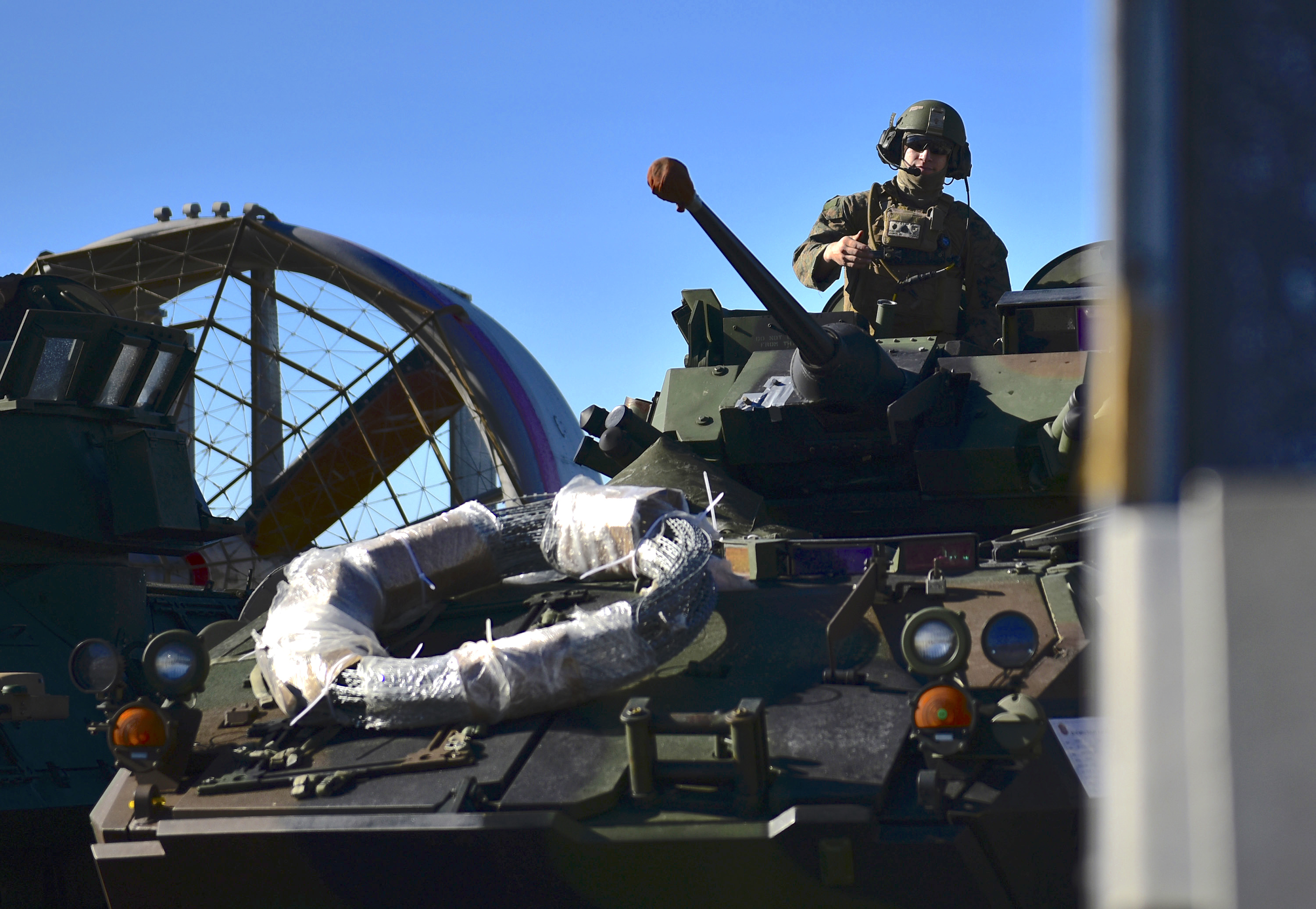
“We have to make smart investments, we have to make sure that we’re investing in platforms that will meet our needs not just today but into the future,” Rep. Rob Wittman (R-Va.), the ranking member on the House Armed Services seapower and projection forces subcommittee, said at the breakfast.
“It also is going to require all of us – Congress, the industry, the Marine Corps and others – to make sure that we think outside the box. We have to push our comfort zones, because it is going to require all of us to think, how do we combine the right assets, how do we make sure that we have the right complements of unmanned systems as well as manned systems, and the right platforms to make sure that we can, in that contested environment, be successful.”
“We have to modernize without wasting money on legacy, and there’s that fine transition between the two to cut the cord on the legacy side so that we’re not throwing good money after bad,” Rep. Jack Bergman (R-Mich.), a retired Marine Corps three-star general, said at the event.
“Change is hard, especially when we like what we’re doing. So what I would encourage the industrial base to do, and the Department of Defense to do – because I know the Marine Corps is going to do it – is to have those tough discussions, and then come to us here in Congress and continue to have those innovative discussions that allow us to work together as a team to fund what you’re going to do.”





